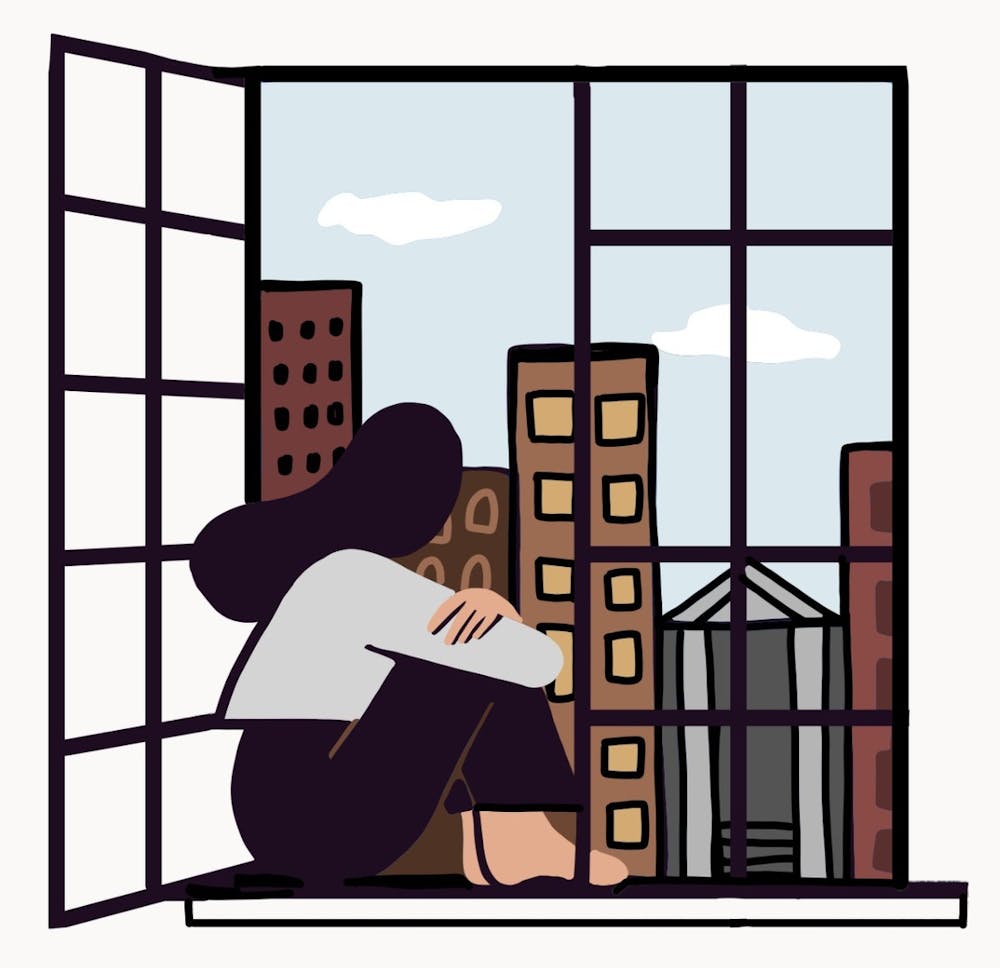During these past 10 months of the pandemic, most can relate to the experience of sitting alone in a bedroom or dorm and wondering when life will return to “normal.” With plans canceled and friends only available through a screen, it is easy to understand how isolation can make young adults feel more disconnected than ever before. Prior to the pandemic, the majority of people had never experienced this form of long-term social isolation.
However, there is a portion of the population that has lived in isolation long before coronavirus was even on the world’s radar. This subset is the chronically ill — individuals homebound due to physical limitations, chronic fatigue syndrome, immunodeficiency or other health barriers. The now universal experience of social isolation can provide a greater sense of empathy for the chronically ill who spend months, years or even a lifetime apart from others.
Emily Deaton, a disability advocate and writer for Women's Health Interactive, has personal experience with long-term medical conditions. In contrast to the shared experience of pandemic isolation, Deaton notes that chronic illness isolation is very different because she faces limitations that her able-bodied peers do not. For example, while her friends could balance an academic and social life in college, Deaton often had to prioritize one over the other because she lacked the energy for both. This meant carefully scheduling social outings and unfortunately staying home when her symptoms flared up.
“I didn't feel very understood because most of my friends — or pretty much all of my friends — in college were able bodied, so they didn't really have similar experiences,” Deaton said.
Another key distinction between the forms of isolation is the perception of progress. While 2020 has come with canceled plans and delayed career goals, at least most people are being similarly impacted. On the other hand, staying home due to medical struggles often entails postponed personal goals while others are moving forward in life and reaching milestones.
Third-year College student Michelle Whitlock was forced to take a year-long medical leave in November her first semester at the University. Whitlock was disappointed because her college journey was sidetracked just as it began, and she was forced to watch others experience this exciting time without her.
“To see my friends work towards their academic and career goals while I was recovering from a concussion and in chronic pain … to be honest, I felt like a failure,” Whitlock said.
Furthermore, Barbara Zunder, director of the Student Disability Access Center, noted that one of the major distinctions between the two types of isolation is the longevity of solitude for chronic illness patients.
“The biggest thing that we have to remember is that for the majority of the global community, this pandemic is going to end,” Zunder said. “For people with disabilities that require them to isolate, they will continue to maintain this lifestyle.”
For those without chronic illnesses, the realization that isolation will ultimately come to a close is relieving. However, those with chronic illnesses who must remain in isolation will likely be left behind in the post-pandemic world.
There are a few main reasons why the chronic illness community is not always visible or at the forefront of our minds, according to Zunder.
First, the chronically ill may not be able to go out as frequently as their peers due to flares of pain, fatigue or other symptoms. If a chronic illness patient has to repeatedly turn down offers to spend time with others due to their illness, they may receive fewer and fewer invitations in the future, as their friends stop asking in anticipation of another rejection, Zunder said. This constant feeling of being forgotten adds to the mental burden for someone living an isolated life.
Second, not all chronic illnesses are discernable at first glance. There are a host of chronic illnesses that wreak havoc internally without visual symptoms apparent to an onlooker. The term coined for those who visually appear well but are actually suffering underneath is “invisible illness.”
For example, someone may observe a cast and be able to conceptualize the experience of pain from a broken bone. However, that same person could view someone who is seemingly able-bodied and struggle to grasp the hidden pain of living with an “invisible” chronic illness. Deaton shared that she noticed an interesting shift in how people perceived her illness when she started utilizing a mobility aid.
“People would more readily offer their seat to me [on a bus] when I had a cane versus when I didn't, even though the only thing that changed was me using a mobility aid, and my conditions were still the same,” Deaton said.
Furthermore, when envisioning someone who is chronically ill, the tendency may be to paint a mental picture of a bedbound elderly person, not someone in the prime of life. Zunder explained how this misperception is often due to the fact that young people are generally viewed as healthy, and therefore many adolescents with chronic illnesses face an additional level of stigma.
“A young person with a chronic illness has an added layer of complexity in that the youth are generally viewed as young, healthy, and able-bodied,” Zunder said.
For all of these reasons, the chronically ill can be left behind in isolation or even unnoticed at times, which is dangerous because they are the ones people should be intentionally checking in on to offer their support. Additionally, there is significant research that suggests isolation takes a toll on one’s body, both physically and mentally. According to the CDC, studies indicate a connection between social isolation and an increased risk for major health problems, such as heart disease, dementia and strokes.
Psychology Prof. Dr. Joseph Allen came to a similar conclusion with his own research. Allen has decades of experience studying the social behavior of adolescents with his role as the principal investigator of the Kliff-Vida project. The study follows a sample of 184 students from a local middle school beginning at age 13 into adulthood. Allen said that a major finding of the study is that the lack of strong social relationships early on is an indicator of mental and physical health problems later in life.
“In short, the social interactions that young adolescents and young adults have look like they’re crucial for both physical and mental health over the course of a lifespan,” Allen said.
He explained that humans store mental and emotional trauma in the body. There are also signs that we physically begin to deteriorate on a biological level when we are kept separate from one another.
Despite the grim statistics, the isolation of the chronically ill has created one superpower within the population — resilience. Both Allen and Zunder agree that the chronically ill are experts at living the pandemic lifestyle of social isolation.
“They have come to terms with things the rest of us … are still just grappling with,” Allen said.
However, Allen was quick to note that it is not human nature to ever fully adapt to isolation.
“It’s not something we ever fully adjust to,” Allen said. “We’re not wired to be separate from one another.”
While all of this information may be disconcerting, society has the power to fight isolation fatigue with one simple habit. According to Zunder, making an intentional effort to connect with those who are still alone can make a lasting difference in the lives of those living with chronic illnesses. Prioritizing social time with others, even virtually, can promote mental well-being. Right now, it may be easier to reach out for a virtual movie night or family video call because most are still in a form of isolation at the same time. However, a true testament to one’s dedication to maintaining social connections is how one responds when their life resumes.
“The way that we are currently checking in on each other during this time needs to be continued for people who must remain in isolation,” Zunder said.
Deaton also recommended that friends and family of the chronically ill take the time to listen and learn about medical conditions. She noted that in the past, when someone has taken the time to learn about her chronic illnesses, it made her feel cared for and supported.
“Especially because it impacts my life in such a huge way every single day, that [learning about my conditions] told me that that person really cared about me,” Deaton said. “I think that's something that can really make someone feel less alone.”







